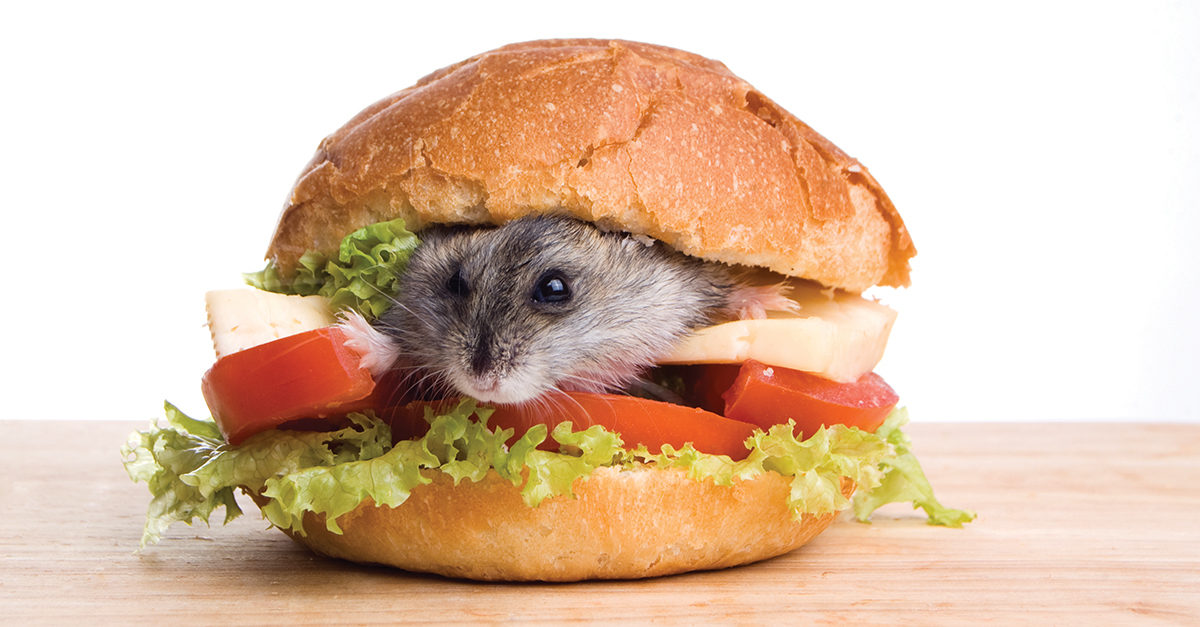With the risk of trips, drips, and the chance of things catching on fire, commercial kitchens can be a hazardous place to work—and a challenging area to maintain.
“Without a question, commercial kitchens are one of, if not the, most difficult spaces to clean,” says James Epperson, owner of Texas-based commercial vent hood, daily and periodic kitchen cleaning provider Halo Restoration Services. “It requires a specific skill set.”
Mistakes can be costly. For example, scratch or discolor a us$2,000 fryer that you didn’t realize was partially made of aluminum, instead of stainless steel, and you could face a $1,000 repair bill.
Fail to disinfect a surface, and diners’ health could be at risk. Research from the National Center for Biotechnology Information (NCBI) indicates foodborne illnesses cost the United States an estimated $14 billion a year, and according to the 2014 Surveillance Report from the U.S. Centers for Disease Control and Prevention (CDC), more than half of those outbreaks stem from food prepared in restaurants.
Kitchen Concerns
Commercial food preparation can involve workers moving at a frenetic pace, sometimes from early morning until late at night. Workers may easily overlook spattered ingredients, oily residue, and other issues.
Because food prep workers are focused on getting dishes fully cooked in time to be packaged or served, it’s the cleaning team’s responsibility to identify and defuse hazards that can cause significant damage and expense, such as:
1. Using the wrong chemicals and cleaning methods. With contamination threats like listeria—a bacterium the CDC estimates causes approximately 1,600 illnesses and 260 deaths annually in the United States—effective kitchen disinfecting is crucial.
As a result, some cleaning professionals reach for strong chemicals. However, if surfaces aren’t properly rinsed off, chemical residue can be transferred to food, giving diners stomach issues, according to Joseph Moreno, corporate advisor for the 9,000-franchisee commercial cleaning company Jani-King.
“Harsh chemicals like bleach will kill contaminants, but can get transferred from stainless steel to food products,” Moreno says. “I’d recommend a neutral cleaner with enzymes in it that’s biodegradable.”
Other problems can occur if staff does not clean kitchen equipment often enough—for example, wear in a commercial oven that wasn’t properly maintained, according to Keith Turner, vice president of support and technical services at commercial kitchen cleaning provider HOODZ.
“Little pieces of oven parts that have broken and fallen off can end up in food products,” Turner says. “Customers can bite into things and need to have dentistry work done.”
In addition, he says layers of grease and carbon that accumulate inside an oven over time can alter its temperature.
“Black carbon absorbs a lot of heat,” Turner says, “which takes away from the cookability of the product.”
To avoid issues: Jani-King confirms approved cleaning practices and products with manufacturers, particularly for new kitchen jobs; its cleaning professionals also refer to a detailed checklist during each shift.
“Just like anything else, it’s repetition; when you’re doing it night after night, you tend to forget things,” Moreno says. “We teach [staff] to go back through to make sure every aspect has been touched.”
If issues arise, a checklist can also provide a record of when specific items were cleaned.
“Bacteria will grow within a matter of hours,” Moreno says. “If an inspector says some stainless steel has been contaminated—but at 11 last night, it was clean—we can’t really be responsible at 11 a.m. since the kitchen has already been used.”
2. Grease buildup. High temperatures can cause grease to liquefy, leak back down the vent, and contaminate food being prepared below, according to Moreno.
If it builds up on the hood’s fan, which is meant to draw out smoke and heat, the motor can burn out, according to Michael Bunga, owner of Austin, TX-based commercial kitchen cleaning provider Pro Hood Cleaning—causing $200 to $400 in repair costs.
Grease can also trigger both a fire and the kitchen’s fire suppression system, Moreno says, once it reaches a certain temperature.
“A flash fire could put you out of business, not including what it costs to recharge the fire suppression system,” he says. “It could be 24 to 72 hours before you’re open again.”
Rooftop grease spills, with the potential byproduct of grease getting into the ductwork and exiting via the roof exhaust fan, can also cause serious damage.
“A lot of times we find extensive damage from grease eating away the membranes of the roof,” Turner says. “In a number of cases, the restaurant has to replace the roof, it’s gotten so bad.”
To avoid issues: Bunga usually quotes three-month hood cleaning intervals. However, he says restaurants that don’t do much cooking, such as ones that primarily serve salads, may be able to stretch that time to six months.
Encouraging kitchen staff to remove and rinse filters nightly can also help reduce fire risk. “Cooks may wait until the hood system is cooled down in the morning, then come in, forget all about it,” Bunga says. “[But] some take my advice and run them through the dishwasher.”
3. Missed spills. Commercial kitchen staff members may not realize overflows have occurred, particularly if equipment isn’t on wheels and easy to move.
“A lot of food and grease can get behind, between, and under cooking equipment—literally inches of it,” Turner says. “We’ve hauled out garbage cans of grease and food that’s fallen.”
Material can be found in the most unlikely places, even ceiling tiles, according to Epperson.
“Brown or yellow, that’s grease, and that’s drawing insects to the facility,” he says. “Pipes and gas lines connected to the stove are also notorious for being overlooked.”
To avoid issues: Check under and around equipment during periodic cleanings, and see if kitchen managers will have employees regularly assess cleanliness, too.
“[Have them] wipe up grease that’s splashed up from a fryer quickly before it hardens and becomes a food source for rodents,” Epperson says. “Have closers do a quick sweep of the floor to get debris off it.”
4. Water cleanup. Every year, more than 3 million food service employees are injured in slip-and-fall accidents, according to the National Floor Safety Institute. Workers compensation claims from slip-and-fall accidents can amount to around $4,000.
A 2011 Liberty Mutual Research Institute for Safety study found contaminated floors were the most significant risk factor; walking on one made it 14.6 times more likely someone would slip.
“If floors aren’t clean or floor mats aren’t properly in place, staff can definitely injure themselves,” Epperson says. “We’ve seen it many times.”
To avoid issues: When power washing floors to remove grease, Pro Hood uses a wet/dry vacuum on any water a mop won’t remove.
Epperson suggests also urging food prep workers to clean kitchen floor mats twice a week in between professional cleanings.
“Not detailing the mats can create a slick, serious hazard,” he says. “I recommend they get a cheap pressure washer, and then use a brush.”
5. Failed inspections. “Certain cities have very strict health inspections,” Epperson says. “If an inspector pops in and finds things aren’t suitable, it becomes a 911 [situation]—the kitchen needs to clean things up in days, or risk being shut down.”
A pest infestation, for example, could close a restaurant for a week, according to Moreno, affecting both its revenue and reputation.
“Even being shut down for a single meal or day can be very, very substantial,” Turner says. “The loss of business for a day, from a revenue standpoint, can reach into the tens of thousands.”
Resolving the situation can also be expensive.
“To avoid putting all other customers in a bad place, it’s going to involve us going off our schedule, and it costs more to bring in more manpower or have people work nights and weekends,” Turner says.
Because cleanup costs can be considerable, some kitchen managers consider handling the problem in-house.
“Is it more cost-effective for them to do it?” Moreno says. “Almost always, no, because if kitchen helpers making $9 to $10 an hour are anywhere close to working a 40-hour week, you’ll definitely bust your budget.”
To avoid issues: Regular, effective cleaning is the key to avoiding inspection woes.
Jani-King tries to track municipality cleaning requirements to ensure clients are meeting local standards. Smaller clients may opt for monthly or quarterly complete kitchen cleanings, according to Moreno; larger commercial outlets often schedule daily visits.
“Most customers are still looking at the cost,” Moreno says. “A lot just want us to do part of it and have their crew handle part of it—but 9 out of 10 times, they’re not trained properly.”
Cooking Connections
Getting preventative commercial cleaning services approved may depend on the food service provider’s size—and your contact in the kitchen.
Larger organizations, according to Epperson, are more likely to have a conduit between the chef and janitorial staff who’s able to focus on maintenance.
“If you have a facility that actually has an executive steward, generally they’re overseeing cleaning, so things tend to get done more efficiently,” Epperson says. “In a smaller operation, you don’t have that chain of command; everyone is super busy. Cleaning is the last thing on peoples’ minds.”
If a middleman isn’t present, enlisting the chef’s help may prove to be beneficial because their culinary training often stresses keeping a kitchen tidy, according to Jani-King Corporate Advisor Joseph Moreno.
“That’s chef 101; [they’re taught to] clean your space,” Moreno says. “If you can get the chef on board with everything that needs to be done, he may actually do classes for you about what needs to be cleaned properly and how to clean it—we’ve had that happen.”




